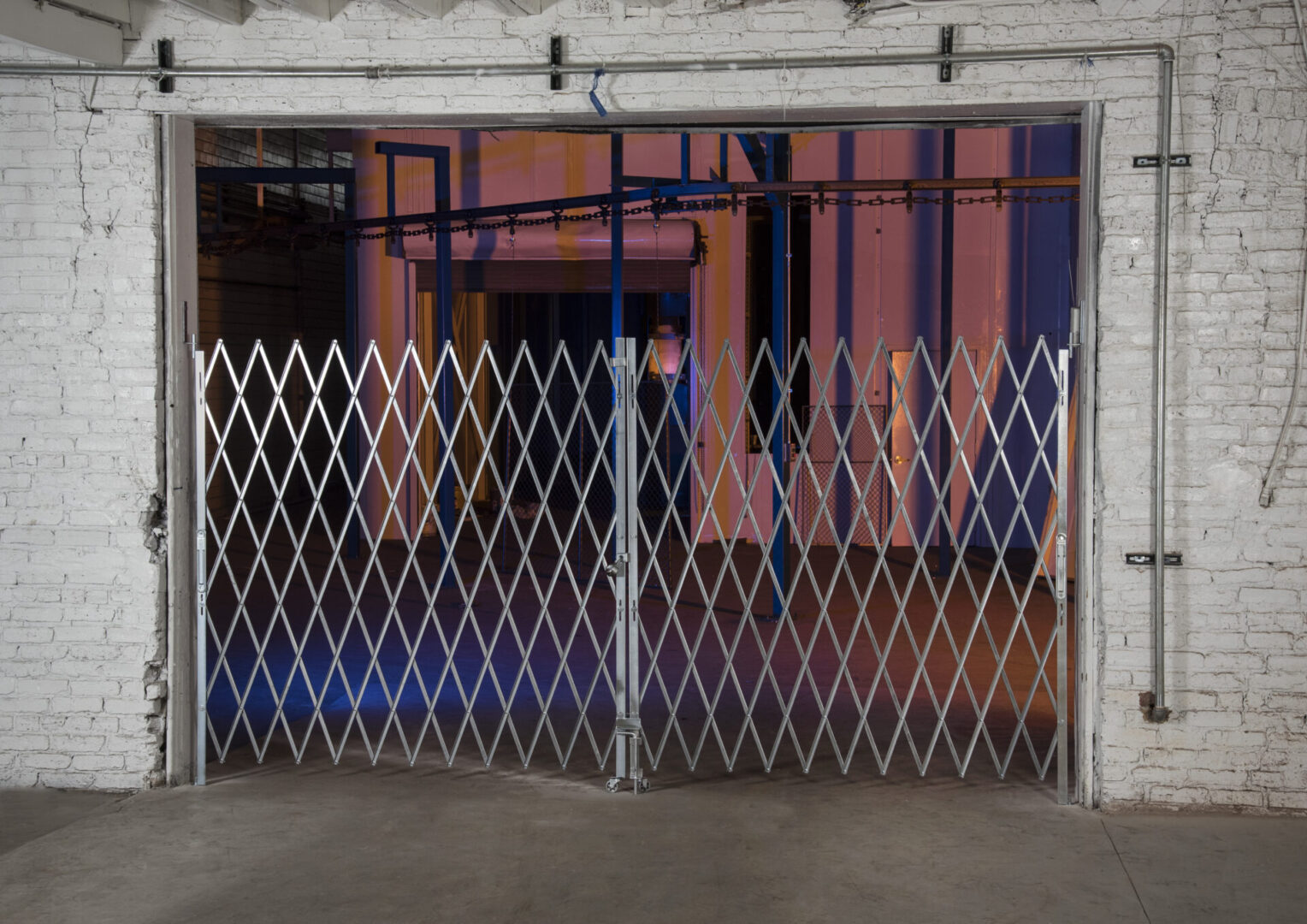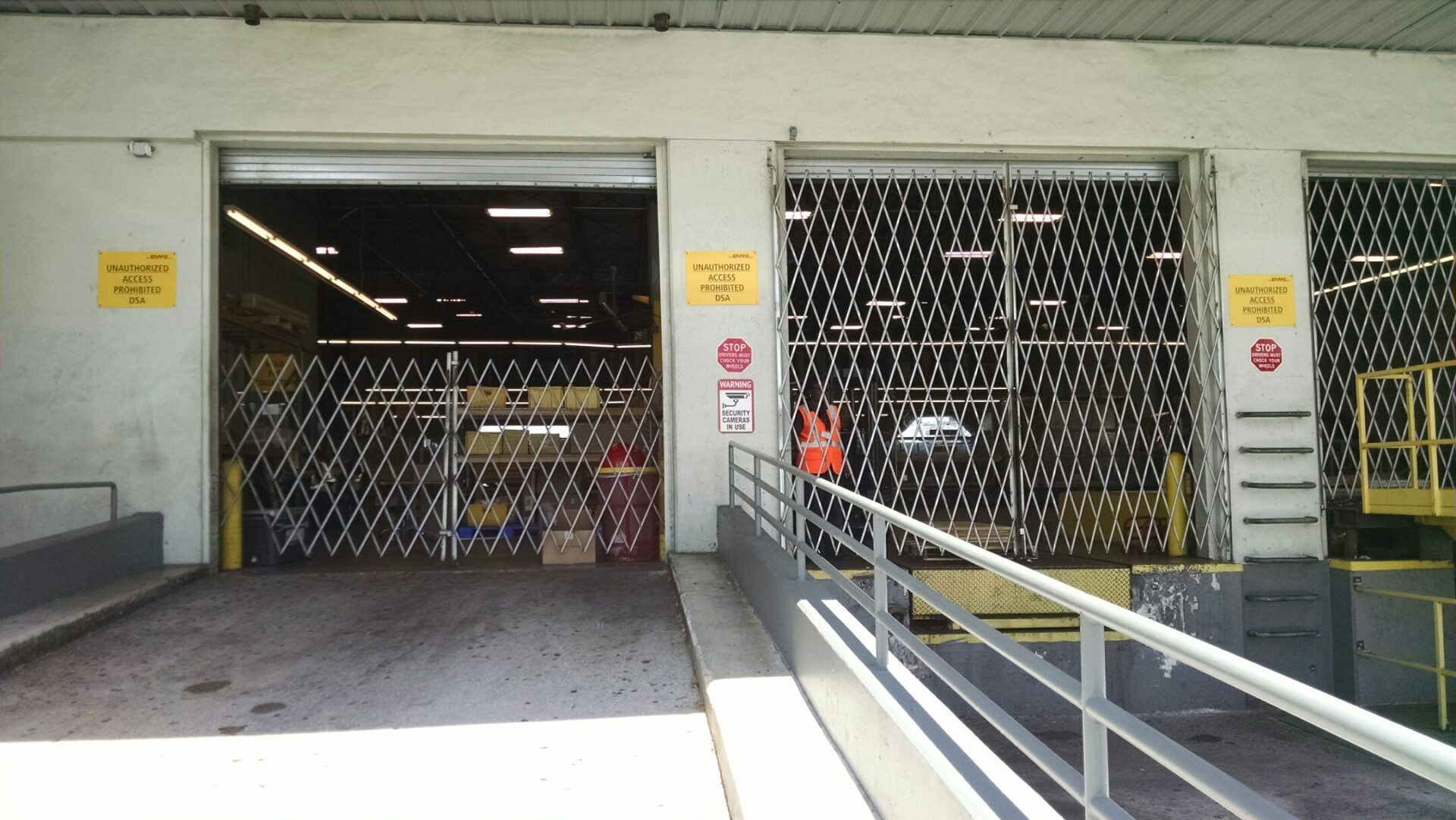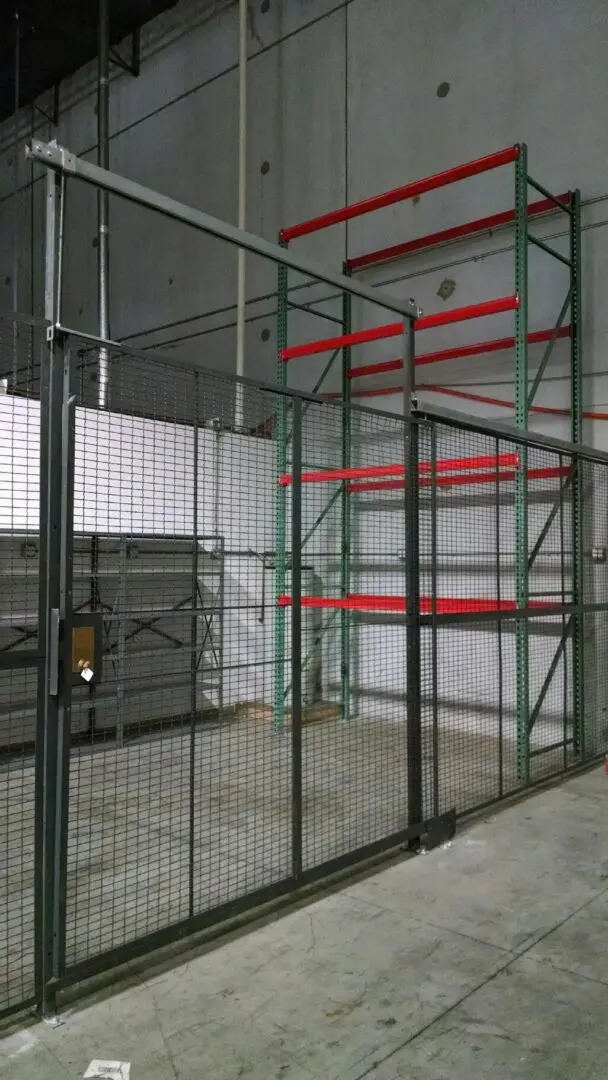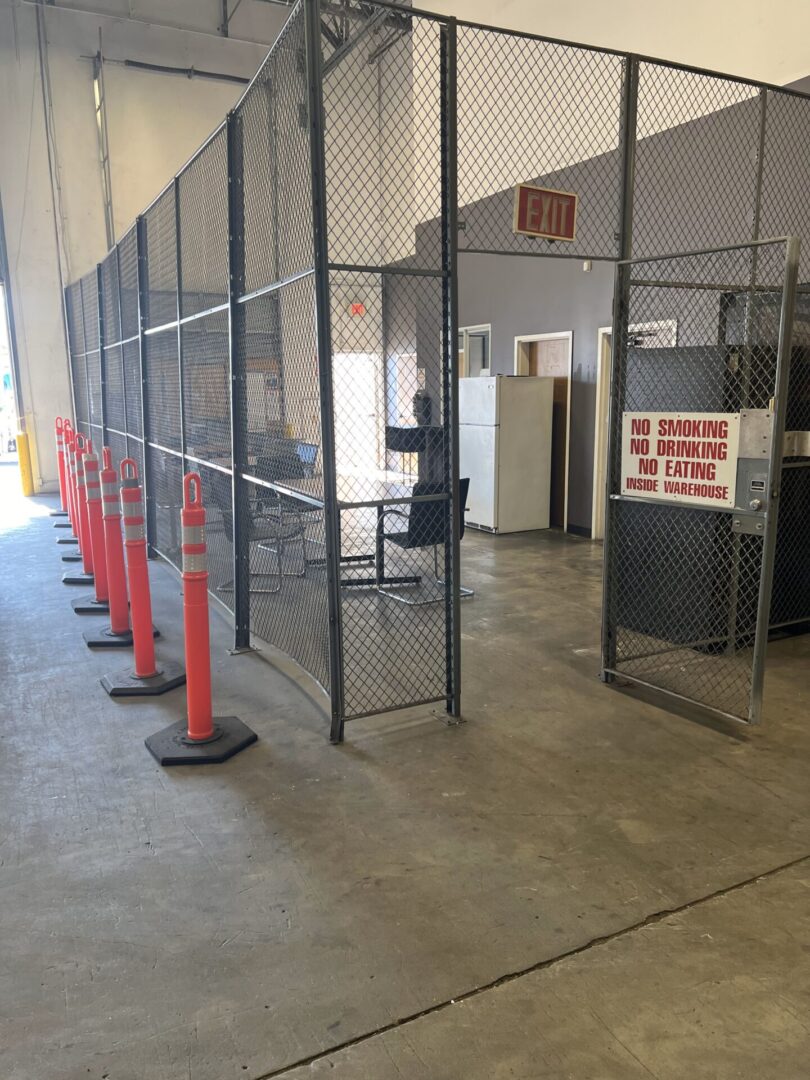Scissor Gates & Enclosures
Scissor Gates
Warehouse scissor gates, also known as accordion gates, are security barriers used in various industrial, commercial, and retail settings. These gates are designed to provide a flexible and effective way to secure areas within a warehouse or facility while allowing for visibility and ventilation. Here are the key features, uses, and advantages of warehouse scissor gates:
Key Features
-
Collapsible Design: Scissor gates are made of metal strips connected by hinges, allowing them to expand and contract like an accordion.
-
Material: Typically constructed from durable materials such as steel or aluminum, offering strength and longevity.
-
Mounting Options: Can be mounted on door frames, entryways, or directly onto walls. They can be single gates or paired to create a larger barrier.
-
Locking Mechanism: Equipped with a locking system to secure the gate when closed, often using padlocks or built-in locks.
-
Mobility: Some models are mounted on tracks or casters, making them easy to move and position as needed.
Uses
-
Security: Used to secure entrances, exits, and restricted areas within warehouses, preventing unauthorized access.
-
Theft Prevention: Helps deter theft by creating a physical barrier that is difficult to bypass.
-
Safety: Can be used to block off hazardous areas, such as zones under construction or maintenance, ensuring worker safety.
-
Crowd Control: Useful in managing the flow of people in busy areas, such as during inventory counts, sales events, or emergencies.
-
Partitioning: Helps to create temporary partitions within a larger space, providing flexibility in space management.
Advantages
-
Visibility and Ventilation: The open design allows for visibility into secured areas and provides airflow, which is beneficial in environments that require ventilation.
-
Flexibility: Easily collapsible and expandable, allowing for quick and convenient use. It can be moved or adjusted as needed.
-
Durability: Made from strong materials that can withstand heavy use and resist tampering or forced entry.
-
Cost-Effective: Generally more affordable than permanent security installations like walls or roll-up doors.
-
Ease of Installation: Relatively easy to install, often requiring minimal tools and hardware. It can be mounted on existing structures without significant modifications.

Applications
-
Warehouses: Securing storage areas, loading docks, and entrances to prevent unauthorized access and theft.
-
Retail Stores: Used at storefronts, stockrooms, and service areas to protect inventory and equipment after hours.
-
Industrial Facilities: Blocking off machinery or hazardous areas to protect workers and equipment.
-
Schools and Universities: Managing access to gymnasiums, storage rooms, and restricted areas.
-
Parking Garages: Controlling access to vehicle storage and service areas.
How They Work
-
Expansion and Contraction: Scissor gates expand to cover the desired opening and contract into a compact form for storage when not in use.
-
Installation: Mounted on tracks or with hinges, they can be swung or slid into place. Some are designed to fold up completely out of the way when not in use.
-
Locking: Once in the closed position, the gate can be locked using padlocks or integrated locking mechanisms to secure the area.
In summary, warehouse scissor gates are a versatile and effective solution for securing areas within a warehouse or other facility. Their collapsible design, combined with strength and ease of use, makes them ideal for a variety of applications where security and flexibility are paramount.
Protective Barriers
Warehouse protection barriers and bollards are safety and security measures used to safeguard assets, equipment, and personnel within warehouse facilities. They are designed to prevent accidental collisions with vehicles, machinery, or falling objects, thus reducing the risk of damage and injury. Here's an overview of warehouse protection barriers and bollards, including their types, uses, and benefits:
Warehouse Protection Barriers
Guardrails
-
Description: Horizontal barriers installed along the edges of platforms, mezzanines, or walkways.
-
Uses: Prevents accidental falls and provides a physical barrier between pedestrians and hazardous areas.
-
Materials: Typically made of steel, aluminum, or plastic.
Safety Barriers
-
Description: Vertical barriers placed around machinery, equipment, or storage areas.
-
Uses: Shields assets and personnel from accidental collisions, especially in high-traffic areas.
-
Materials: Made of durable materials such as steel, with options for reflective coatings or visibility enhancements.
Rack Protectors
-
Description: Protective guards are installed at the base of pallet racks.
-
Uses: Prevents damage to racks from forklift collisions, reducing the risk of structural failure and inventory loss.
-
Materials: Typically constructed from steel or polymer materials, with options for bolt-on or magnetic attachment.
Column Protectors
-
Description:Guards are placed around upright columns supporting warehouse structures.
-
Uses: Shields columns from damage caused by collisions, reducing the risk of structural instability and worker injury.
-
Materials: Made of heavy-duty materials like steel, with options for impact-resistant coatings.
Dock Bumpers
-
Description: Cushioned pads or bumpers are installed at loading dock edges.
-
Uses: Absorbs impact from backing trucks and trailers, preventing damage to loading dock equipment and building structures.
-
Materials: Typically constructed from rubber or polyurethane materials for impact absorption.
Warehouse Protection Bollard
Steel Bollards
-
Description: Vertical posts are installed at strategic locations within the warehouse.
-
Uses: Provides physical protection against collisions from vehicles, machinery, or other equipment.
-
Materials: Made of heavy-duty steel for maximum impact resistance, with options for reflective coatings or visibility enhancements.
Removable Bollards
-
Description: Bollards that can be easily installed or removed as needed.
-
Uses: Allows for temporary access control or traffic management within the warehouse facility.
-
Materials: Typically made of steel or other durable materials, with options for locking mechanisms.
Flexible Bollards
-
Description: Bollards are designed to flex upon impact and then return to their original position.
-
Uses: Absorbs impact energy from collisions, minimizing damage to vehicles and surrounding structures.
-
Materials: Constructed from flexible materials such as rubber or plastic, with options for reflective surfaces for visibility.
Benefits
-
Safety: Reduces the risk of accidents, injuries, and property damage within the warehouse environment.
-
Asset Protection: Shields equipment, inventory, and infrastructure from damage caused by collisions.
-
Compliance: Helps warehouses comply with safety regulations and standards regarding workplace safety and hazard mitigation.
-
Cost Savings: Prevents costly repairs and downtime associated with accidents and damage.
-
Visual Deterrent: Acts as a visible deterrent to prevent unauthorized access or reckless behavior within the facility.
Applications
-
Loading docks, pedestrian walkways, storage areas, machinery and equipment zones, intersections, corners, and other high-traffic or high-risk areas within the warehouse.
In summary, warehouse protection barriers and bollards play a crucial role in maintaining safety and security within warehouse facilities. By providing physical barriers and impact resistance, they help mitigate the risk of accidents, injuries, and property damage, ultimately promoting a safer and more efficient working environment.









